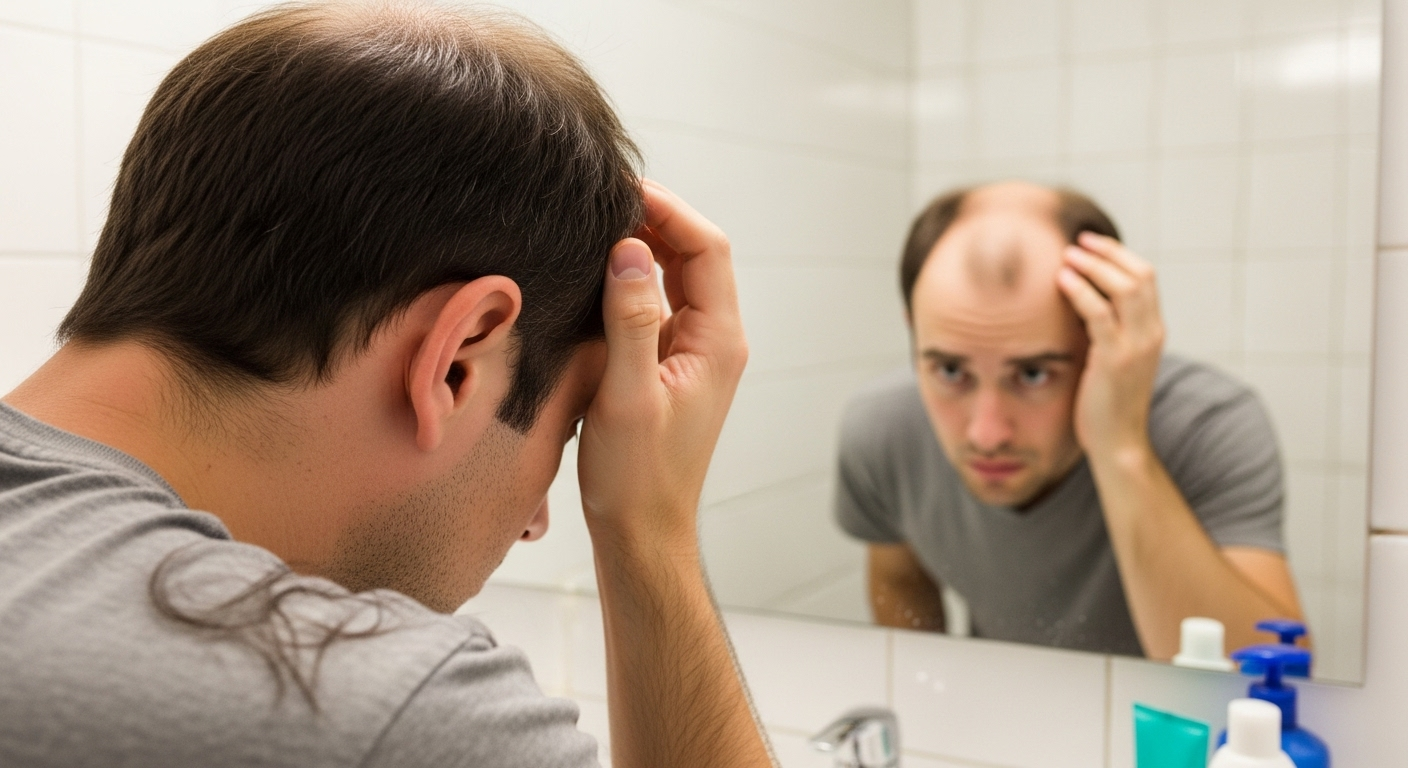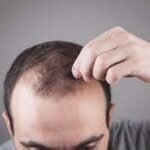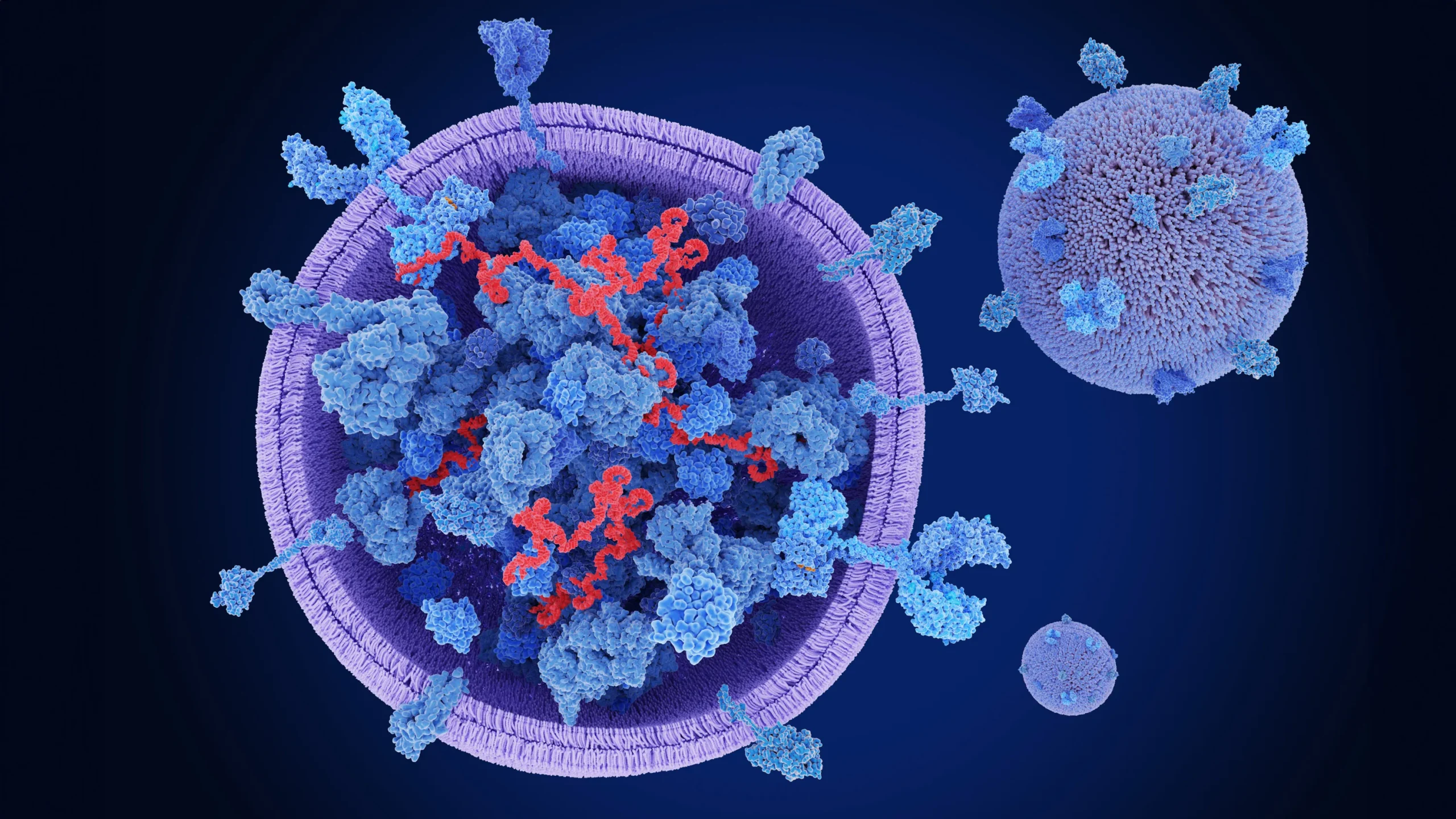Summary Truth About Low Potassium and Hair Loss? Low potassium can weaken hair follicles, disrupt growth cycles, and trigger shedding, leading to noticeable thinning. This article explains the causes, symptoms, and diagnosis of potassium deficiency while outlining safe recovery timelines and food sources to restore balance. Expert insights highlight how correcting potassium levels can improve …
Summary
Truth About Low Potassium and Hair Loss? Low potassium can weaken hair follicles, disrupt growth cycles, and trigger shedding, leading to noticeable thinning. This article explains the causes, symptoms, and diagnosis of potassium deficiency while outlining safe recovery timelines and food sources to restore balance. Expert insights highlight how correcting potassium levels can improve overall health and support natural hair regrowth.
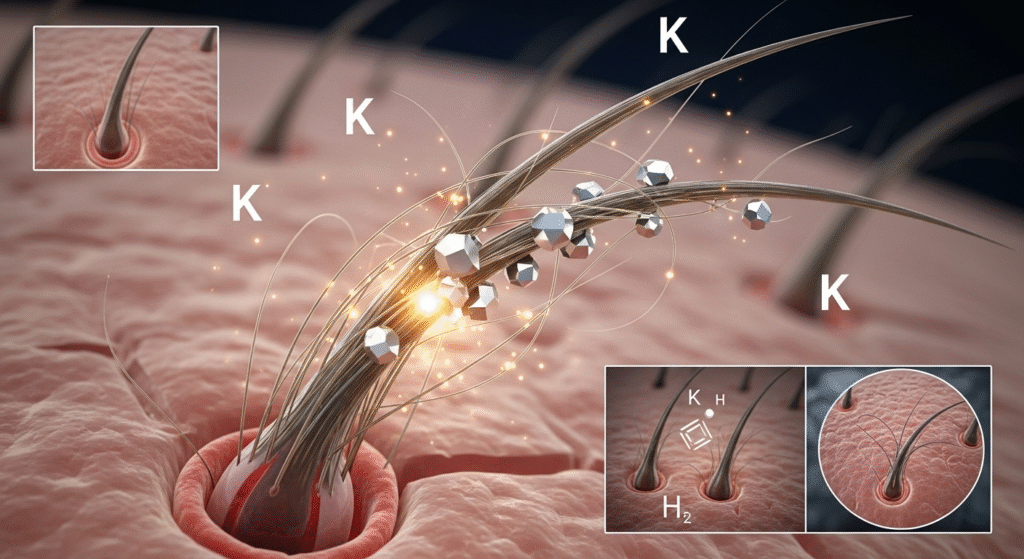
Table of Contents
Introduction
Are you noticing hair thinning or unusual shedding and wondering if low potassium could be the cause? In this guide, we’ll explore low potassium and hair loss, focusing on how potassium deficiency affects follicles, weakens growth, and triggers shedding. You’ll also discover symptoms to watch for, recovery timelines, and expert tips to restore balance. Backed by medical insights, this article will help you understand the problem and take safe, practical steps toward healthier hair.
What Is Potassium? Role of Potassium in Hair Health
Potassium is an essential mineral and electrolyte that keeps your body’s cells functioning properly. It regulates fluid balance, supports muscle activity, and controls nerve signaling.
For hair specifically, potassium is critical because it:
- Maintains hydration around follicles, preventing dryness and brittleness.
- Helps regulate blood circulation to the scalp, ensuring nutrients reach hair roots.
- Balances sodium levels, which, when too high, can weaken follicles.
Pro Tip: Healthy potassium levels work alongside magnesium, zinc, and vitamins B and D to keep hair strong and resilient.
What Happens When Potassium Is Low (Hypokalemia)
When potassium levels drop below normal, the body enters a state known as hypokalemia. Blood potassium values under 3.6 mmol/L are considered low.
Common causes include:
- Inadequate diet (low intake of fruits and vegetables)
- Excessive loss from sweating or vomiting
- Certain medications like diuretics
- Kidney disorders affecting electrolyte balance
General symptoms of low potassium:
- Muscle weakness
- Fatigue
- Cramps and irregular heartbeat
- In some cases, brittle hair and excessive shedding
How Low Potassium Low potassium and hair loss are connected
Hair follicles depend on potassium-driven nutrient transport to function. Without enough potassium:
- Follicles receive less oxygen and nutrition.
- Growth cycles shorten, pushing hair into the resting (telogen) phase prematurely.
- Excess shedding, known as telogen effluvium, can occur.
Some studies also suggest potassium channel disruptions in follicles may accelerate thinning. While not as common as genetic hair loss, hypokalemia can significantly worsen shedding in vulnerable individuals.
Diagnosis: How to Know If Low Potassium Is Causing Your Hair Loss
To confirm whether hair loss is linked to potassium deficiency, doctors may recommend:
- Blood tests: Checking serum potassium levels.
- Medical history review: Identifying possible causes such as medication use or chronic illness.
- Exclusion of other triggers: Thyroid disease, iron deficiency, or stress-related loss must be ruled out.
A dermatologist or trichologist will assess both your bloodwork and hair condition before confirming hypokalemia as the cause.
Recovery and Timeline: What to Expect After Correcting Low Potassium
Correcting low potassium often improves overall health first, followed by hair.
Typical timeline:
- 1–2 weeks: Fatigue and cramps ease with improved potassium levels.
- 1–3 months: Excess shedding slows down noticeably.
- 3–6 months: Early regrowth and thicker strands become visible.
Case Insight: Patients correcting mild hypokalemia through diet alone often notice stronger hair within three months. Severe deficiencies may take longer, especially if other factors like thyroid issues are present.
How to Safely Increase Potassium Levels
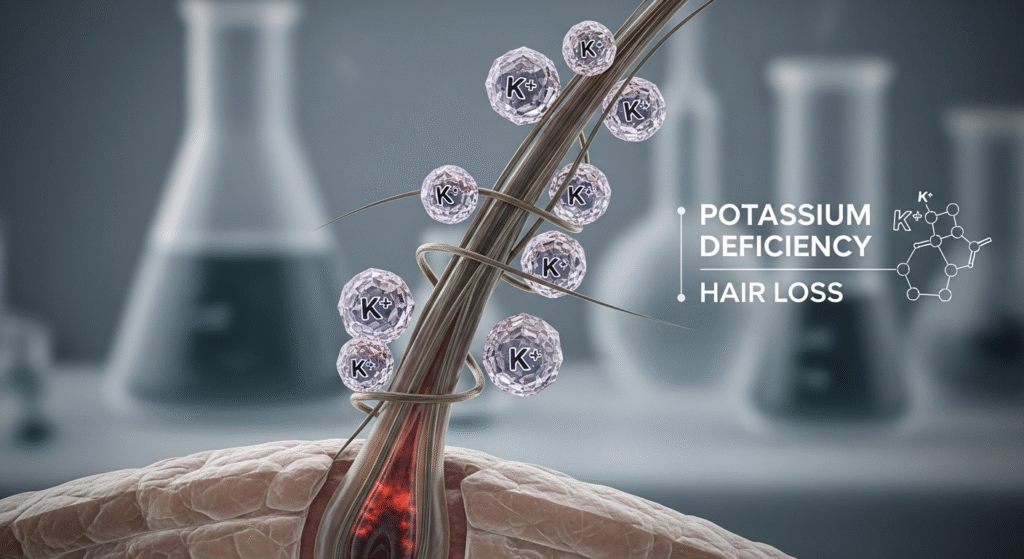
Best dietary sources of potassium include:
- Bananas, oranges, and avocados
- Leafy greens like spinach and kale
- Potatoes, beans, and lentils
- Fish such as salmon and tuna
[Image Suggestion: Table comparing potassium-rich foods and their content per 100g]
Supplements: These should only be taken under medical advice, especially if you have kidney or heart conditions. Over-supplementation can cause dangerous hyperkalemia.
Lifestyle tips:
- Stay hydrated to maintain electrolyte balance.
- Reduce excess sodium intake, which competes with potassium.
- Monitor medications with your doctor to avoid imbalances.
Other Factors That May Be Hiding Behind Hair Loss
Even if low potassium contributes to hair loss, other triggers often play a role:
- Nutrient deficiencies: Iron, zinc, vitamin D, or protein
- Hormonal issues: Thyroid problems, PCOS, menopause
- Stress: Emotional or physical stress can trigger telogen effluvium
- Genetics: Androgenetic alopecia (pattern baldness)
Addressing only potassium may not fully solve hair loss if these issues remain untreated.
When to See a Doctor or Specialist
Seek medical help if you experience:
- Persistent hair thinning despite dietary changes
- Severe muscle cramps or irregular heartbeat
- Potassium deficiency due to underlying kidney or hormonal conditions
A dermatologist or endocrinologist may provide a more comprehensive treatment plan, including supplements, topical therapies, or advanced options like PRP (Platelet-Rich Plasma) for hair growth.
FAQs
Can low potassium cause hair loss?
Yes, potassium deficiency can disrupt follicle function and cause increased shedding, although it’s less common than other causes.
What potassium level is considered too low?
Levels below 3.6 mmol/L are generally considered hypokalemia and may affect hair health.
How long does it take for hair loss to improve after correcting potassium?
Usually, noticeable improvements occur within 3–6 months, depending on severity and other health factors.
Is it safe to increase potassium quickly?
No. Over-supplementation can cause dangerous complications. Always follow medical advice.
Can hair grow back fully after correcting low potassium?
In most cases, yes, but recovery depends on overall health, genetics, and early intervention.
Conclusion
Low potassium can weaken hair follicles, accelerate shedding, and disrupt natural growth cycles. With proper diagnosis, dietary adjustments, and professional care, many patients see visible improvements in hair density within months. Addressing root causes early ensures better results and prevents long-term damage.
Ready To Take Your Next Step
If you suspect low potassium and hair loss are affecting your confidence, don’t wait. Book a consultation with Dr. Uzma Irfan in Islamabad today for expert diagnosis, tailored dietary advice, and safe treatment options to restore your hair and health.

